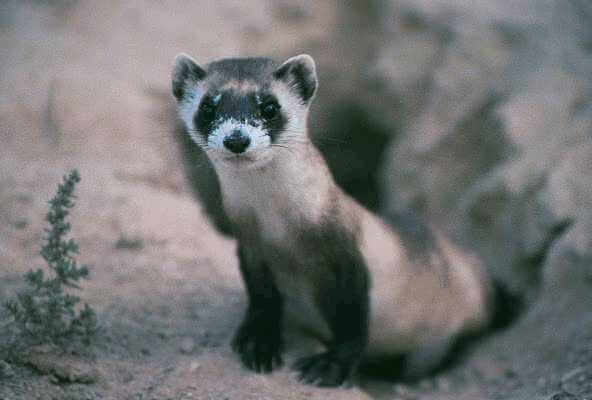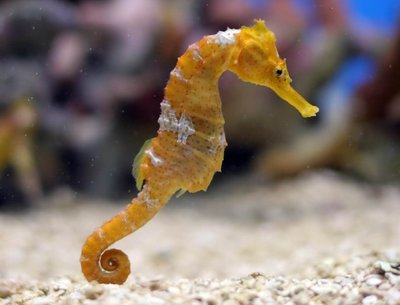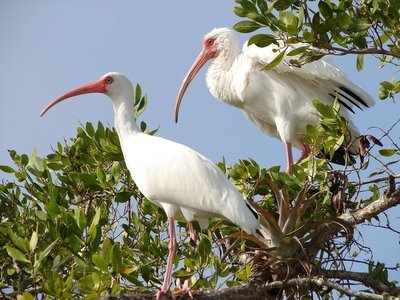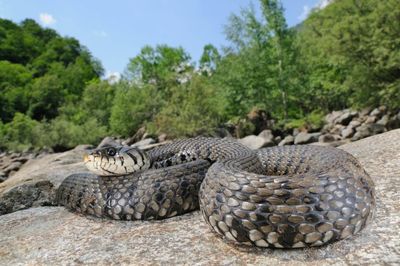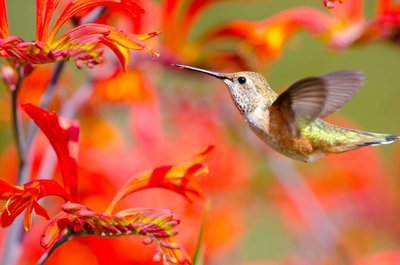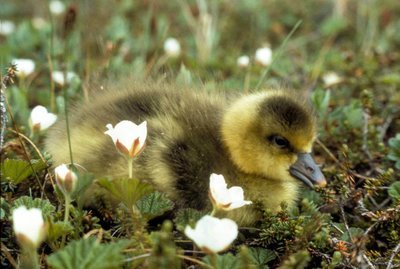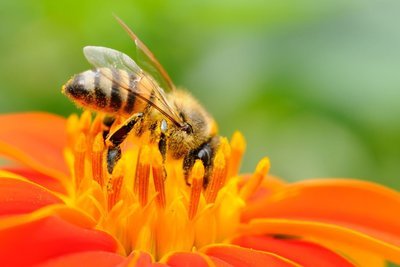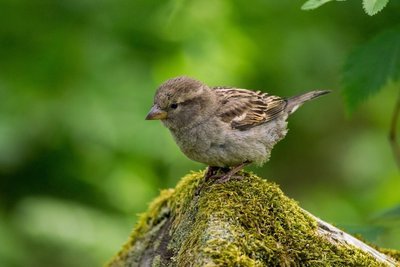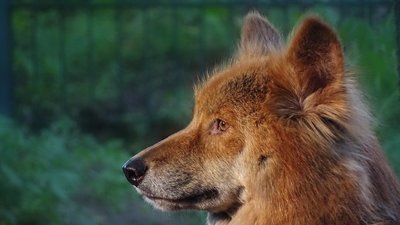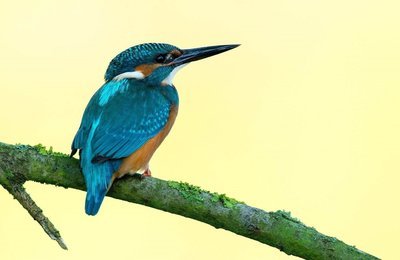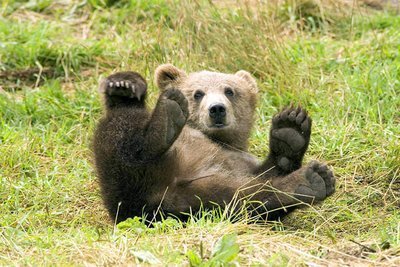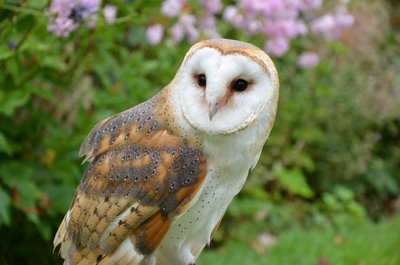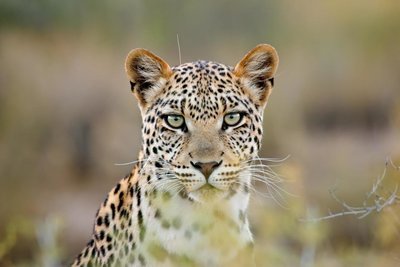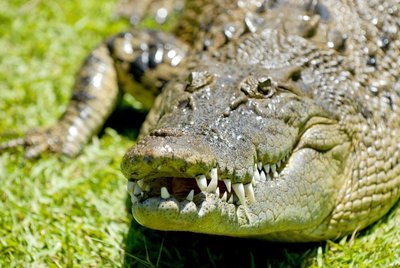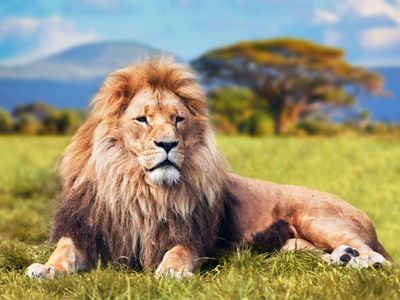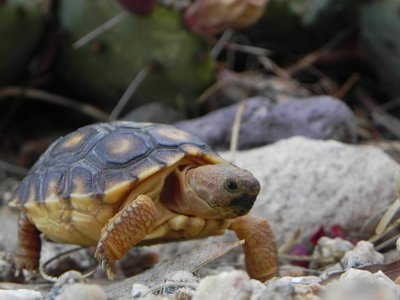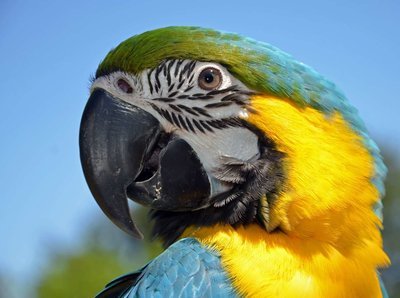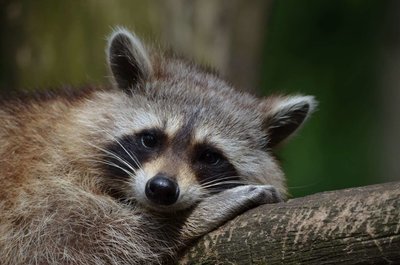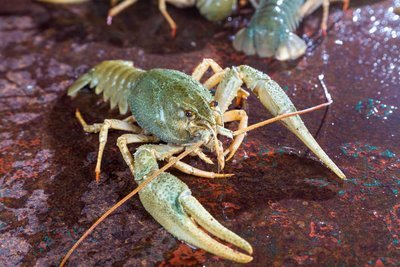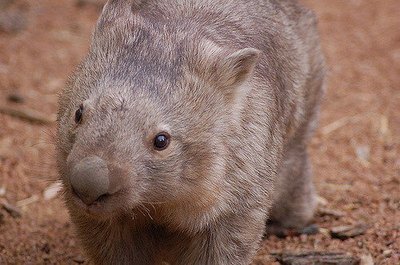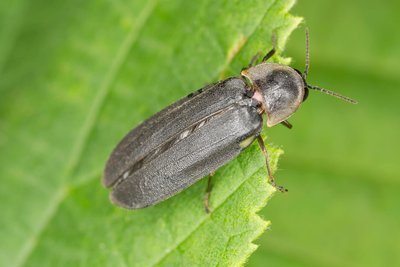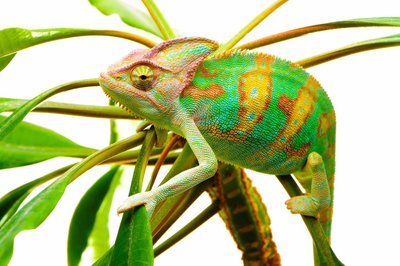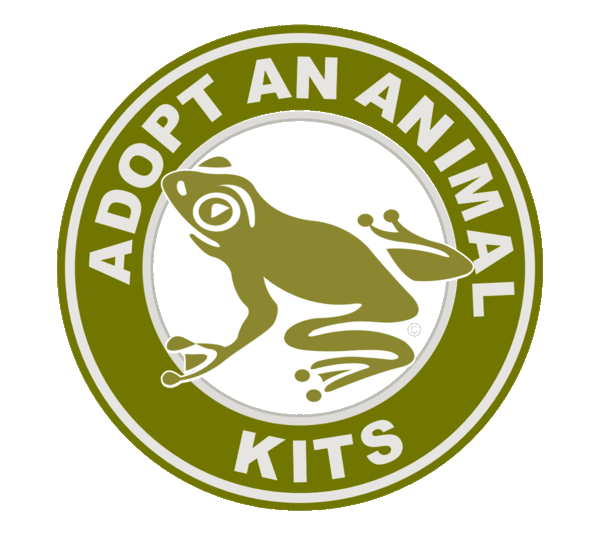

Adopt An Animal Kits
Adopt An Animal symbolically. Your Adopt An Animal Kit comes in a Deluxe Folder and includes: Glossy Photo of Your Adopted Animal; Adopt An Animal Adoption Certificate; Fact Sheet About Your Adopted Animal; Help Animals Info Cards Packed With Information On Animal Issues & How You Can Help Animals And The Environment. Adopt An Animal for Yourself or as a Gift.
Adopt A Black-Footed Ferret
Adopt A Black-Footed Ferret
Your Adopt A Black-Footed Ferret Kit comes in a Deluxe Folder and includes:
- Glossy Photo Of Your Adopted Black-Footed Ferret
- Adopt A Black-Footed Ferret Adoption Certificate
- Fact Sheet About Your Adopted Black-Footed Ferret
- Help Animals Info Cards Packed With Information On Animal Issues & How You Can Help Animals And The Environment
Adopt A Black-Footed Ferret Kits make great gifts and can be sent directly to the recipient. Simply supply the recipient's name and mailing address as shipping information. We'll even include a letter stating the Adopt An Animal Kit is from you.
Adopt An Animal symbolic adoption is a one time fee. Adopt an animal for yourself or order an Adopt An Animal Kit as a gift. Help make a difference for animals - Adopt An Animal Today!
Adopt A Black-Footed Ferret
The black-footed ferret (Mustela nigripes) is a small carnivorous North American mammal closely related to the steppe polecat of Russia, and a member of the diverse family Mustelidae which also includes weasels, mink, polecats, martens, otters, and badgers. It should not be confused with the domesticated ferret.
The black-footed ferret is the most endangered mammal in North America. They became extinct in the wild in Canada in 1937, and were classified as endangered in the U.S. in 1967. The last known wild population was taken into captivity in the mid-1980s, a few years after its accidental discovery in Wyoming.
Black-footed ferrets are about 18 inches long, with a furry 6 inch tail, and they weigh roughly 2 pounds. Like most members of the family, they are very low to the ground with an elongated body and very short legs. Their fur is white at the base but darkens at the tips, making them appear yellowish-brown overall, with black feet and tail-tip, and a distinctive black face mask. These blend in well with the prairie ecosystem in which they live. They do not change their habitat over the seasons.
Even before their numbers declined, black-footed ferrets were rarely seen: they weren't officially recognized as a species by scientists until 1851, following publication of a book by naturalist John James Audubon and Rev. John Bachman. Even then, their existence was questioned since no other black-footed ferrets were reported for over twenty years.
They are nocturnal hunters that are almost entirely dependent on a plentiful supply of prairie dogs to prey on, and shelter in a prairie dog burrow during the day. A single family of four black-footed ferrets eats about 250 prairie dogs each year and cannot survive without access to large colonies of them.
Historical habitats of the black-footed ferret included shortgrass prairie, mixed-grass prairie, desert grassland, shrub steppe, sagebrush steppe, mountain grassland and semi-arid grassland. Black-footed ferrets use prairie dog burrows for raising young, avoiding predators and thermal cover. High densities of prairie dog burrows provide the greatest amount of cover for black-footed ferrets.
Black-footed ferrets are believed to be polygynous. Mating occurs in February and March. When a male and female in estrus encounter each other, the male sniffs the genital region of the female, but does not mount her until after a few hours have elapsed. During copulation, the male grasps the female by the nape of the neck, with the copulatory tie lasting from 1 1/2 to 3 hours. Unlike other mustelids, the black-footed ferret has low reproductive rates. Gestation of black-footed ferrets lasts 42–45 days. Litter size ranges from 1–5 kits. Kits are born in May and June in prairie dog burrows. Kits are raised by their mother for several months after birth. They first emerge above ground in July, at 6 weeks old. They are then separated into individual prairie dog burrows around their mother's burrow. Kits reach adult weight and become independent several months following birth, from late August to October. Sexual maturity occurs at one year of age.
The black-footed ferret is solitary, except when breeding or raising litters. They primarily hunt for sleeping prairie dogs in their burrows. They are most active above ground from dusk to midnight and 4 am to mid-morning. Above ground activity is greatest during late summer and early autumn when juveniles become independent. They are inactive inside burrows for up to 6 days at a time during winter.
Female black-footed ferrets have smaller home ranges than males. Home ranges of males may sometimes include the home ranges of several females. Adult females usually occupy the same territory every year. Black-footed ferrets may travel up to 11 miles to seek prey.
The loss of their prairie grassland habitat, hunting, the drastic reduction of prairie dog numbers through both habitat loss and poisoning, canine distemper and sylvatic plague all contributed to the near-extinction of the species during the 19th and 20th centuries.
For a time, the black-footed ferret was harvested for the fur trade. The large drop in black-footed ferret numbers began during the 1800s, lasting through the 1900s, as prairie dog numbers declined because of "control programs" and the conversion of prairies to croplands. Sylvatic plague, a disease introduced into North America, also contributed to the prairie dog die-off. Inbreeding may have also contributed, as studies on black-footed ferrets revealed low levels of genetic variation. Canine distemper devastated the Meeteetse ferret population in 1985. A live virus vaccine originally made for domestic ferrets killed large numbers of black-footed ferrets, thus indicating that the species is especially susceptible to distemper.
In 1981, a very small population of about 130 animals was discovered near Meeteetse, Wyoming. Soon after discovery, the population began a rapid decline due to disease. By 1986, the Wyoming Game and Fish Department led a cooperative program to capture the 18 remaining animals and begin an intensive captive breeding program. At that time, the entire world population amounted to about 50 individuals in captivity.
U.S. federal and state agencies, in cooperation with private landowners, conservation groups, Native Americans, and North American zoos, have been actively reintroducing ferrets back into the wild since 1991. Beginning in Wyoming, reintroduction efforts have since expanded to sites in Montana, South Dakota, Arizona, Utah, Colorado and Chihuahua, Mexico. Proposed reintroduction sites have been identified in Canada.
Currently, about 1,200 ferrets are thought to live in the wild.
Conservation efforts have been opposed by stock growers and ranchers, who have traditionally fought prairie dogs. In 2005, the U.S. Forest Service began poisoning prairie dogs in private land buffer zones of the Conata Basin of Buffalo Gap National Grassland, South Dakota. When a few ranchers complained the measure was inadequate, the forest service expanded its "prairie-dog management" in September 2006 to all of South Dakota's Buffalo Gap and the Fort Pierre National Grassland, and also to the Oglala National Grassland in Nebraska, against opinions of biologists in the U.S. Fish and Wildlife Service. Following exposure by conservation groups and national media, public outcry and a lawsuit mobilized federal officials and the poisoning plan was revoked.
THREATS TO BLACK-FOOTED FERRETS
Despite significant recovery successes, the black-footed ferret remains one of the most endangered animals in the world. The primary reasons the species remains at risk are the same that nearly caused the animal’s extinction. Conversion of native grasslands to agricultural land, widespread prairie dog eradication programs, and fatal, non-native diseases have reduced ferret habitat to less than two percent of its original range. The remaining habitat is now fragmented, with prairie dog towns separated by expanses of agricultural land and other human developments.
Poisoning and shooting of prairie dogs continues, threatening both prairie dogs and black-footed ferrets. There are no known black-footed ferret populations that were not reintroduced. All those populations remain small and fragmented. They have lost about 90 percent of their genetic diversity, which can lead to inbreeding, health issues and reduced reproduction. Without the protection of prairie dogs, black-footed population could dwindle again and be lost forever.
Adopt Adopt An Animal Kits
Our Adopt An Animal Kits are educational packets that allow you to symbolically adopt a favorite animal species and contain a variety of information promoting the protection of wildlife, companion animals, farm animals and the environment. By purchasing a symbolic adoption kit you will receive a packet of information regarding daily choices you can make to help the earth and animals.
Your Adopt An Animal Kit comes in a Deluxe Folder and includes:
Glossy Photo Of Your Adopted AnimalAdopt An Animal Adoption CertificateFact Sheet About Your Adopted AnimalHelp Animals Info Cards Packed With Information On Animal Issues & How You Can Help Animals And The Environment.
Adopt an animal for yourself or order an Adopt An Animal Kit as a gift. Symbolically adopting an animal is the perfect gift for a loved one who loves animals, and helps to promote the compassionate treatment of animals and respect for the environment by offering information on how to help the earth and animals. Adopt An Animal Kits can be sent directly to the recipient: simply supply the recipient's name and mailing address as shipping information. We'll even include a letter stating the Adopt An Animal Kit is from you.
Adopt An Animal Kits is a small, independent business not affiliated with any other business, non profit or charitable organization.
Fast Shipping!
Shipping time for Adopt An Animal Kits averages 2 to 4 business days - USA. Allow additional time for Adopt An Animal Kits orders outside the USA. Your Adopt An Animal Packet will arrive approximately 2 to 4 business days following shipping date. Shipping for Adopt An Animal Kits within the USA is by U.S.P.S. Priority Mail.
INTERNATIONAL ORDERS: Average shipping time for Adopt An Animal Kits outside of the USA is 5 to 14 business days, including Canada. International Shipping & Handling for Adopt An Animal Kits is by U.S.P.S. First Class Mail.
About Us
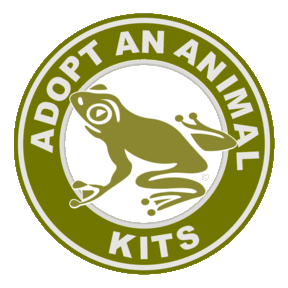
Adopt An Animal Kits, LLC
The world is teaming with an amazing diversity of animals. Some species are beautiful, others bizarre — but they all are important to the ecosystem and deserve our respect, compassion and protection. Unfortunately, many animal species are declining at a rapid rate as a result of irresponsible human activities. Habitat destruction, pollution, hunting, poor agricultural practices and changes in climate are among the threats faced by wildlife and domestic animals.
Adopt An Animal Kits, LLC is a small business who believes in promoting the advancement of compassionate living by educating the public about animal and environmental issues and what individuals can do to prevent cruelty to animals. Through our work, we strive to eliminate the prejudice of animals (speciesism) through educational efforts. Our business produces printed and printable educational materials available to individuals with an interest in earth and animal topics. Our Adopt An Animal Kits seek to educate and influence individuals on environmental and animal issues. The purchase of an Adopt An Animal Kit allows you to symbolically adopt your, or your loved one's, favorite animal species while promoting the protection of wildlife, companion animals, farm animals and the environment. Rather than adopting an indivdual animal, you are symbolicly adopting the species. Each kit contains a collection of information on how you or your loved one can make daily choices to help animals and the environment.
Our website provides an information portal regarding these issues. Information posted on the site is free of charge and available to anyone with an interest. Our printed and printable materials are available to individuals with an interest in earth and animal issues. We produce hundreds of fact sheets, flyers, and digital materials regarding environmental and animal issues. Most materials are available at no cost to anyone with an interest.
Adopt An Animal Kits, LLC is not a charitable or nonprofit organization.
